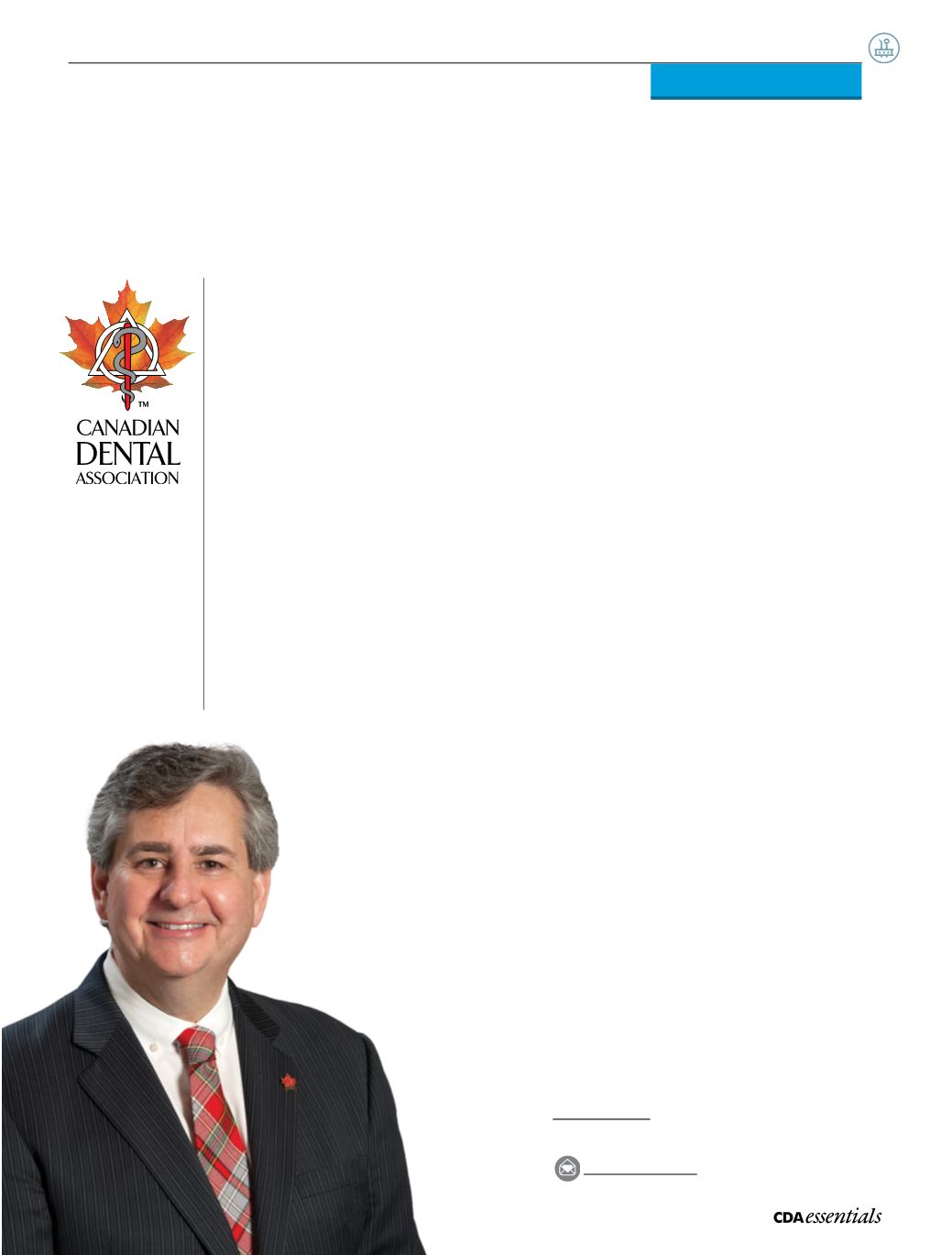

7
Volume 3 Issue 6
|
CDA
at
W
ork
I
attended the Dental Industry Association
of Canada (DIAC) annual general meeting
in Toronto this year, where the issue of grey
market and counterfeit products (collectively
known as noncompliant products) was top of
mind. Despite efforts by dental companies and
organized dentistry to educate dentists about
the dangers of using noncompliant products,
this long-standing issue persists in Canada and
around the world.
The general feeling among the folks I spoke with
at the DIAC meeting is that the Canadian market
for noncompliant products is growing, although
nobody knows for certain because sales of non
compliant products can’t be accurately tracked.
To be compliant, a product must have a Health
Canada product licence and be sold by a dealer
with a Health Canada establishment licence. If
a product’s document trail doesn’t lead back to
both types of Health Canada licenses, the effec-
tiveness and safety of a product (and by extension
the risks it presents to a patient) are unknown.
It’s quite easy to unwittingly purchase
noncompliant products. They can often
be purchased at a much lower price
and they look just like the real thing!
But using anything other than fully
compliant products—those that
have been shown to be effective
and safe according to Health Canada
regulations—risks diminishing the
quality of care we provide to our
patients. This is unquestionably too
high a price to pay for a bargain.
How can dentists know for sure that the
products they are bringing into their practice
are authentic? One way is to use DIAC’s step-by-
step protocol for checking products (p. 21). DIAC
recommends assigning one member of your
dental team as a product checker (the person
who typically orders and receives supplies). This
designated individual should be knowledgeable
about the products and will be responsible for
working through the DIAC protocol each time
new products arrive in the office.
At a glance, noncompliant products can look
very similar to legitimate products, but the
DIAC checklist tells you what to look out for
specifically. For instance, check the packaging
(e.g., is the writing in both English and French?),
its contents (e.g., is it the same size, shape
and colour as advertised?) and keep both the
ordering materials (e.g., flyers and catalogues)
and the product packaging until the product has
been entirely consumed. This way, you can go
back to the manufacturer or dealer if problems
are detected later on.
To give you a sense of how difficult it can be
to discern a phony from a genuine product,
Bernie Teitelbaum, recently retired executive
director of DIAC, provides some side-by side
comparisons of compliant and noncompliant
versions of products on page 20 in this edition
of
CDA Essentials
.
The unscrupulous people profiting from the
sales of noncompliant dental products are not
the ones held to account if something goes
wrong with a patient’s treatment. The onus is on
us as dentists, in collaboration with our dental
team members, to make sure that our patients
receive only the best care, starting with the
products we choose to purchase.
From the President
RandallCroutze, bsc, dds
president@cda-adc.caNoncompliant Dental Products:
NotWorth the Risk
















